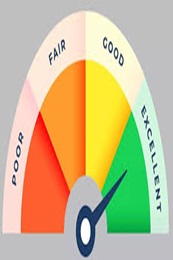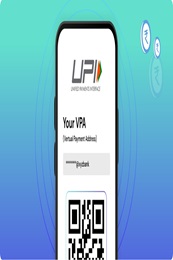A Comprehensive Guide to Account Payee Cheque
April 15, 2025

In the world of banking, the humble cheque continues to play a vital role, even as digital transactions take the lead. Among the different types of cheques, the "account payee" cheque stands out as one of the safest and most secure methods for transferring money. Whether you're paying for services or settling a debt, using an account payee cheque ensures that the money reaches the right person, directly into their bank account. But how does this secure payment method work, and why is it so important? Let’s explore the ins and outs of an account payee cheque and how it can benefit both issuers and recipients in today’s banking landscape.
What is an Account Payee Cheque?
An account payee cheque is a cheque that can only be deposited into the account of the person or entity named as the payee. When you issue this type of cheque, you direct the bank to pay the specified amount from your account directly into the recipient’s account. This makes it a secure option for transferring money, as the cheque cannot be encashed by anyone other than the intended recipient.
Unlike regular cheques, where the recipient can cash the cheque over the counter or endorse it to someone else, an account payee cheque can only be deposited into the account of the payee. This added security makes it a preferred method for transactions between individuals or businesses.
That said, it’s easier to transfer funds digitally. You can download the mobile banking app, and use IMPS or NEFT services to transfer funds. Alternatively, you can also use Net Banking services to transfer funds. It hardly takes a few seconds to transfer money digitally.
Key Features of an Account Payee Cheque
Here are the key features that define an account payee cheque:
1. Security
The funds on an account payee cheque are only transferred into the payee’s bank account, reducing the chance of fraud or misuse.
2. Validity
As per RBI (Reserve Bank of India) mandate, an account payee cheque is valid for three months from the date of issue. This is a
3. Inability to Encash Over the Counter
Unlike regular cheques, account payee cheques cannot be encashed over the counter or transferred to another person.
4. Proof of Payment
The bank statement serves as proof of payment once the cheque is cleared and deposited into the payee's account.
Key Terms Related to Account Payee Cheques
To better understand how account payee cheques work, let's take a look at the three key terms involved:
1. Drawer
The drawer is the person who writes and signs the cheque, authorizing the payment from their account.
2. Drawee
The drawee is the bank where the drawer holds an account. The bank is responsible for processing the cheque.
3. Payee
The payee is the person or entity to whom the cheque is addressed. This is the recipient of the payment.
How to Issue an A/C Payee Cheque
Issuing an account payee cheque requires the following steps:
1. Draw Parallel Lines
On the top left corner of the cheque, draw two parallel lines.
2. Write "Account Payee Only"
Between these lines, write "Account Payee Only" or "A/C Payee Only." This marks the cheque as an account payee cheque.
3. Complete the Details
Fill in the payee’s name, the amount in figures and words, the date of issue, and sign the cheque.
Why Should You Use an Account Payee Cheque?
The primary benefit of an account payee cheque is security. The cheque ensures that the money is safely transferred to the intended recipient’s account. This minimizes the risk of fraudulent activities like misappropriation or theft, as the cheque cannot be cashed by anyone else or endorsed further.
Moreover, account payee cheques provide a safe and efficient method for transferring money between individuals or businesses, especially for transactions involving large sums.
How to Deposit an Account Payee Cheque
When you receive an account payee cheque, it cannot be cashed instantly over the counter. To deposit the cheque into your account, follow these steps:
- Fill Out the Deposit Slip: Write your account number, name, and other required details on the deposit slip.
- Deposit the Cheque: Attach the cheque to the deposit slip and either drop it in the cheque deposit box or hand it over to a bank representative.
- Wait for Clearance: The bank will process the cheque, and the funds will be credited to your account in two to four days.
Procedure for Account Payee Cheque Clearance
Once the payee deposits the cheque into their account, the bank follows the Cheque Truncation System (CTS) to process the payment. This involves electronically transmitting the cheque details to a central clearing house, ensuring quick and accurate clearing.
Final Thoughts
Account payee cheques are a reliable and secure way to transfer funds, offering peace of mind to both the issuer and the payee. By ensuring that the money can only be deposited into the payee’s account, these cheques minimize the risk of fraud. Whether for personal transactions or business payments, using an account payee cheque can provide a secure alternative to digital transactions.
Enjoy easy banking with Ujjivan Small Finance Bank. Save more with our high-interest Savings Account and Deposit products. Need cash for your business or personal needs? Apply for MSME Loans or Micro Loans with us – we offer competitive rates and quick disbursal. We also offer vehicle loans and home loans tailored for your unique requirements. Experience a smooth banking journey with Ujjivan SFB!
FAQs
1. What is the difference between a regular cheque and an account payee cheque?
A regular cheque allows the payee to either deposit the cheque into their account or cash it at the bank counter. In contrast, an account payee cheque can only be deposited into the payee’s account, ensuring higher security by preventing misuse or endorsement to others.
2. How do I issue an account payee cheque?
To issue an account payee cheque, draw two parallel lines at the top left corner of the cheque. In between the lines, write "Account Payee Only" or "A/C Payee Only." Then, fill in the payee's name, amount, date, and your signature.
3. Can an account payee cheque be transferred to someone else?
No, an account payee cheque cannot be transferred to another person. It can only be deposited into the account of the person named as the payee, making it a more secure payment method.
4. How long is an account payee cheque valid?
An account payee cheque is valid for three months from the date of issue. After this period, it expires, and the payee cannot deposit or encash it anymore, regardless of the payment amount.
5. What happens if there are insufficient funds in the drawer’s account?
If there are insufficient funds in the drawer’s account when an account payee cheque is deposited, the cheque will bounce, and the payee will not receive the payment. The drawer may also face penalties for dishonouring the cheque.
6. Can I cash an account payee cheque over the counter?
No, you cannot cash an account payee cheque over the counter. It must be deposited into the payee's account by completing a deposit slip and submitting it to the bank, either in person or through an ATM with cheque deposit functionality.
7. Is there a fee for depositing an account payee cheque?
Depositing an account payee cheque generally doesn’t incur a fee at most banks, as it’s part of standard banking services. However, if you're using cheque deposit facilities at ATMs or through other channels, it’s best to check with your bank for any specific charges.
8. What information should be written on the back of an account payee cheque?
When depositing an account payee cheque, the payee should write their name, account number, phone number, and sometimes the bank branch details on the back of the cheque to ensure correct processing.
9. Can account payee cheques be cleared faster than regular cheques?
Both account payee and regular cheques generally undergo the same processing speed via the Cheque Truncation System (CTS). However, since account payee cheques are only deposited into the payee's account, the risk of processing delays due to counter encashment is reduced.
10. What happens if I write the wrong payee name on an account payee cheque?
If you write the wrong payee name on an account payee cheque, the cheque may be rejected during the clearance process. It’s crucial to double-check the payee’s details before issuing the cheque to avoid such issues.
Latest Blogs

Telangana Housing Board & KPHB Colony: A Guide to Affordable Urban Housing in Hyderabad
March 14, 2025
As Telangana continues its rapid urbanisation journey, two key housing entities—Telangana Housing Board (THB) and Kukatpally Housing Board Colony (KPHB)—have played critical roles in shaping the state's real estate ecosystem.

Does Checking CIBIL Score Frequently Lower Your Credit Points?
April 07, 2025
Imagine you're planning to apply for a home loan, a credit card, or even a car loan. Naturally, you want to ensure your CIBIL score is in good shape before proceeding.

Explained: Can NRIs Buy an Agricultural Land in India?
April 03, 2025
Real estate investment is often a top priority for Non-Resident Indians (NRIs) looking to retain strong financial ties to India.

How to Improve Your CIBIL Score from 600 to 750: A Step-by-Step Guide
April 02, 2025
Your CIBIL score is like your financial reputation—banks check it before approving loans or credit cards. If your score is hovering around 600, you might face difficulties in securing credit or may get loans with higher interest rates.

What Happens When You Leave Your Savings Account Unused?
April 01, 2025
Imagine waking up one day to find that your hard-earned money is locked away and inaccessible. Sounds stressful, right? This is precisely what happens when you leave your Savings Account inactive for too long.





